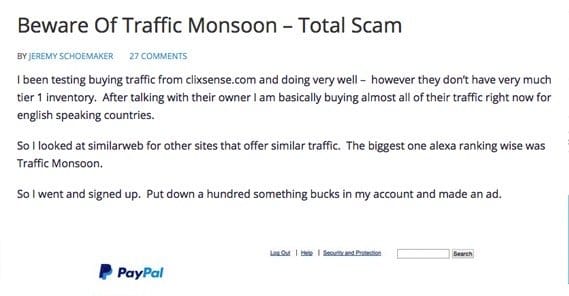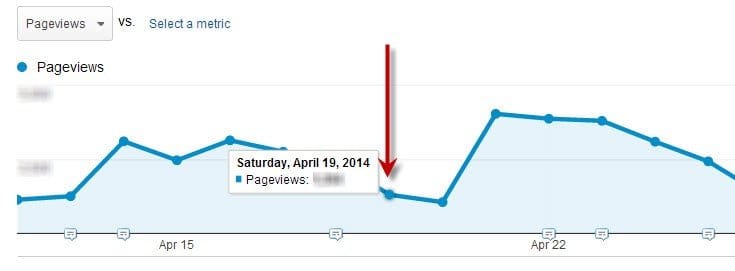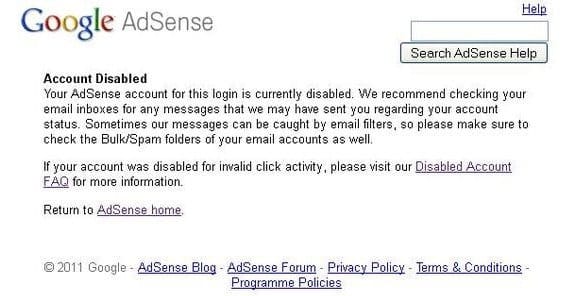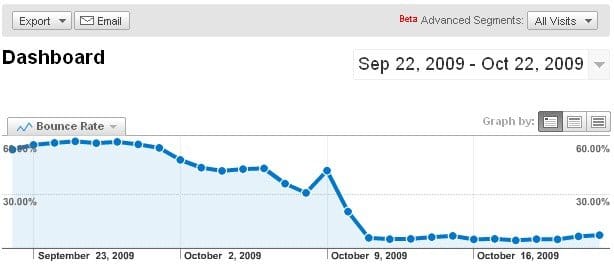Is it Dangerous or Risky to Buy Website Traffic?
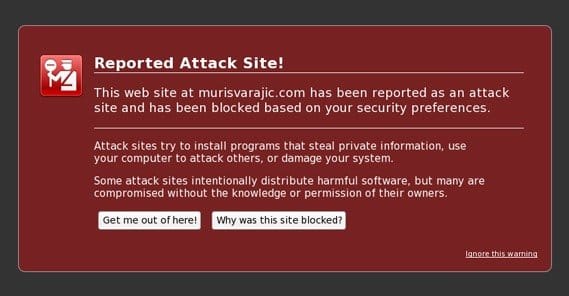
Everything in the world has an associated risk. There’s a risk to getting out of bed in the morning. You could trip, fall, and break your neck on the dresser. On the other hand, if you don’t get up, you’ll be in bed when the meteor crashes through the ceiling and hits you. It has happened!
So, is it risky buying website traffic? Sure. There are all sorts of things that can go wrong. Is it dangerous? Sure, in a minor way. It’s not as if some Russian hit squad is going to come to your house if they discover you were buying traffic. You won’t even be removed from Google’s search rankings.
What I’m going to do is go over the various risks and dangers associated with buying traffic, as well as the possible consequences and how to mitigate them. Buying traffic can be perfectly safe – well, as safe as anything is in this world – but it’s only as safe as you make it.
Risk: You Spend Too Much
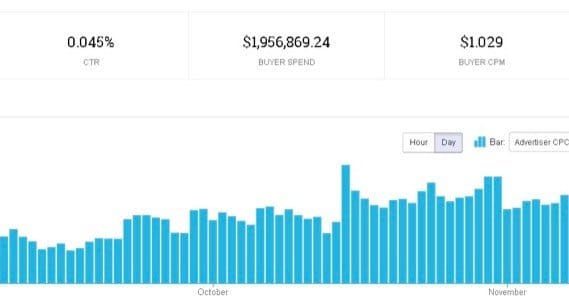
How much should you spend on website traffic? That I can’t tell you. There are too many factors involved, ranging from your industry to your ad network or traffic source. If you want highly targeted traffic in bulk, for a niche industry without a lot of exposure, be prepared to pay a premium for it. If you’re in a very broad niche with a lot of appeal, your traffic will be cheaper, even if it’s targeted.
Beware of deals that look too good to be true. Chances are they probably are. A lot of the lowest costs traffic generators out there use software to throw hits at your site, which is completely valueless to you. Others use clickfarms in third world countries, which may be real people, by causes other issues. Some use broad, untargeted ads that pull in a lot of traffic, but that traffic isn’t all that interested. It will at least convert, at a low rate, but not much more.
It’s possible to buy legitimate, high converting traffic, you just need to pick your source very carefully, and be willing to pay for it. Essentially, you’re saving yourself the time and energy of running ads, and replacing that time and energy with money.
Risk: The Seller Doesn’t Deliver At All
This is another risk that comes from using low quality sellers, and it’s the same risk we see with sites like eBay or Craigslist. What happens when you find a site that promises 100,000 hits per month for $200, and you pay them $200? You expect them to begin delivering your website hits, more or less immediately. If they don’t, you might just have an issue.
There are some low quality sellers out there who subsist entirely on scamming people. They open up a website with a good deal, they pay, copy, or make up some positive testimonials, they leave a bunch of positive reviews for themselves all over the Internet, and they contract anyone who comes their way. They’ll be very nice, and possibly very pushy, when trying to sell you on their high priced packages.
Then, when you accept and send them the money, that’s it. End of discussion, end of communications. You won’t be able to contact them again. You won’t be able to get any contact information elsewhere, either; they’ll have nothing in their WHOIS, for example. Then, within weeks or months – whenever the negative press gets bad enough – they disappear. Make no mistake; they’re somewhere else, under a different name, doing the same thing. Their site will hardly look different, even.
There’s nothing you can do once you’ve given money to these scammers, not unless you want to get police involved, and even then the chances of any resolution are slim. There’s no FBI website hits fraud unit. They have bigger fish to fry. Your legal action likely won’t go anywhere. Live and learn.
Risk: The Seller Delivers Bad Hits
This is a much, much more common risk and is probably the number one risk when it comes to buying traffic. Traffic can be roughly divided into several categories, though the line between categories is slim. Plus, what falls into the best category for you might be a worse category for another site. They are:
- Highly targeted. This traffic is made up almost entirely of the people interested in your business, who meet your demographics. This is the kind of traffic you’d get out of well-run Facebook ads, for example. These people have a high conversion rate.
- Poorly targeted. This traffic is made up of “the rest” of the people who would visit your site. They’re real people, real hits, but they just don’t care about your business. This is what you would get from StumbleUpon or from untargeted Facebook ads, most likely. You can convert some of it, but not at a high rate.
- Clickfarm. This traffic is entirely from third world countries and is made up of people who not only don’t care about your site, but who can’t convert even if they wanted to. You don’t sell to those countries, or they don’t have the money to buy.
- Bot traffic. This is the worst kind of traffic, because not only is it completely valueless to you, it can never become valuable. It’s literally no different from putting a weight on your F5 key and letting your browser refresh your website over and over.
The cheapest, worst non-scam sellers of website traffic will be delivering traffic from the bottom two. At the very worst, shoot for poorly targeted traffic. At least it has some potential value. Highly targeted traffic is the best, but is expensive and difficult to find outside of the big established ad networks. If you can find it, by all means, dump money into that contract and use it while you can.
Risk: The Seller Delivers Less Than Promised
This is probably the second most common risk with buying traffic, and it’s not necessarily that bad, but it does mean you might be wasting money or dealing with an amateur seller.
The idea is simple, of course. If you pay for 100,000 hits in a month, by the end of 30 days, you want to have 100,000 recorded hits above your normal amount. If you’re getting less than that, you have an issue.
There are two possible reasons, in general, to be receiving less than advertised. The first is that the seller just isn’t delivering. This is a problem, but it’s a problem you can work through with judicious refund requests and support. If you’re getting high quality traffic but not quite up to the amount delivered, this is the way to go.
The other reason is that the seller is delivering the traffic, but your analytics aren’t picking it up. This tends to happen primarily with bot traffic, and can be a pretty big issue. It’s also a sign that the seller isn’t giving you quality, and you should probably look for your traffic elsewhere.
Risk: Ad Networks Don’t Pay for Bad Hits
Now for some risks that don’t come with the traffic itself or your contract. This one is a common rule amongst all sorts of different ad networks. If you’re running ads, and those ads pay you per view – typical PPM ads, then – they no doubt have filters in place to only count certain kinds of views. If the views you’re paying for are bot views, for example, they will almost definitely be filtered.
What this means is that you pretty much are never able to buy traffic and make money out of the transaction without being able to sell some product to the people visiting. PPM ads pay very little per thousand views, and typically that number is going to be a fraction of what it costs you to send a thousand views your way. If you happen to find ads that pay highly and traffic that costs less, you might come close to breaking even, but only if the ad network doesn’t filter out the traffic.
In case you were wondering if this is a common problem or not, well, just take a look at this.
Risk: Ad Networks Block You
This is sort of an extension of the previous risk. If you’re sending too much traffic to ads and that traffic ends up filtered, you’re going to face penalties. Ad networks don’t like having their resources wasted in serving ads to fake users, and they don’t like serving ads to websites that send them that fake traffic.
Now, a certain amount of bot traffic is expected online. So much of the Internet is powered by bots, from rogue spambots to Google’s spiders, that it’s impossible to punish everyone who refers a bot to an ad. The problem comes when those bots are trying to hide the fact that they’re bots. That’s behavior typical of scammers.
To an ad network, bots hiding their botness is an indication that the site is trying to get money without earning it. Worse, it means that the advertisers in their network are getting valueless traffic, and it jeopardizes their contracts. It hurts everyone all around, and can get you banned from the program. This applies to everything from Bob’s Discount Ad Servers to Google AdSense.
Risk: You Take Down Your Own Site
This is a risk, but admittedly a small one. It takes a lot of effort to take down a site these days. Most hosts have built-in DDoS protection, at least on a minimal level, which means it’s hard for sheer volume of traffic to take down a site. That’s why most DDoS attacks today use specific types of requests to overload a server, rather than try to flood it with volume.
This is also an easy risk to mitigate. Just, you know, don’t buy a million hits per day.
Risk: Click Farms Abuse Your Social Accounts
This is sort of a tertiary risk to attracting the attention of clickfarms. Clickfarms aren’t like robots. They don’t act like robots. Their entire purpose is to have some legitimate person behind the actions, even if that person is just as valuable to a site as a robot.
Sites like Facebook have detections in place to monitor like bots. They don’t want you to buy likes, so they try to ban the accounts giving out fake likes. One of the primary ways Facebook detects this is by looking for large volumes of likes given in sequence to a certain selection of pages. If 1,000 people like site A, then site B, then site C, then site D, those people might be bots.
To get around this, clickfarms encourage their users to like other pages as well. It’s harder to detect the ABCD pattern when it looks more like AB2FLC5WD.
You might say “well, this doesn’t apply to me, I’m not buying likes.” Well, that might be true, or it might not. You’re not A, B, C, or D on that list, but if you attract the attention of a clickfarm, you might end up F, L, or W. People have complained about clickfarm likes coming from legitimate Facebook ads; this is why. Clickfarms see those ads and like those pages in order to further obfuscate their behavior.
Risk: Your Analytics Information is Skewed
This is a common problem that comes along with getting a lot of poorly targeted traffic. Bot traffic is filtered. Clickfarm traffic can be filtered out by country easily enough. Poorly targeted traffic, on the other hand, comes from actual potential sales locations and consists of people who could potentially be customers. It’s a lot harder to filter out of your analytics if you were going to.
What this means is that you’ll end up with skewed analytics data. What if a lot of the traffic coming from your paid traffic scheme comes from male webmasters in their 30s and 40s? Your demographics for that age and gender will go up. As a consequence, you might end up advertising more towards that demographic. This is fine if they’re your target, but if you’re a shop selling primarily products that appeal to young mothers in their 20s, your ads are reaching the wrong people.
Risk: You Earn a Spammer Label
This ties into referring bad traffic to advertisers. If you send a high volume of bad traffic to advertisers, and if you do it to multiple ad networks, there may be a problem brewing. It’s entirely possible that these ad networks are all powered by the same set of software, and those software installations will share some information between them. Updates are one, but another might be a website blacklist. No ad network wants to give fake traffic to their advertisers, those are the people that pay them.
If you find yourself blocked from Google, Facebook, and the major ad networks, there’s not a lot you can do. Once you’ve been blacklisted, it takes a very long time and a lot of effort to clean up your reputation. Some sites simply don’t’ care; there are other fish in the sea, and working with you and risking more fake traffic just isn’t worth it to their business model.
Risk: Your Cost Per Lead Skyrockets
Volume isn’t all there is to success on a website. If you get 1,000 visitors in a month, that’s not a lot of traffic. Some of the biggest sites on the internet get literally millions of hits per day. It can be hard looking at their traffic statistics, and your own, and not getting discouraged.
The thing is, what if out of those 1,000 visitors you’re converting 900 of them into paying customers? That’s a pretty darn high conversion rate, something most websites can’t even dream of having.
So, you decide you want to buy some traffic. You pay for 5,000 visitors per month, and you get it. It’s even real traffic, not bots, but it’s not very highly targeted. At best, it’s poorly targeted traffic. Out of those 5,000 hits, you convert 2 people.
Now you have 6,000 visitors a month, but you only convert 902 of those visitors into customers. Your conversion rate has dropped, and your expenses have gone up, because now you’re paying for that traffic. Was the value of those two customers worth the cost of paying to reach 4,998 people who don’t matter in the slightest? My guess is probably not.
If your costs are low enough, and the value of a conversion is high enough, the math can work out and make it worth it. A lot of times, though, it just won’t.
So, to be clear: buying website traffic is perfectly fine, so long as you’re doing everything in your power to make sure the traffic you buy is both real and targeted. There are a lot of scammers out there looking to make a quick buck off the people who don’t know any better. Rarely does the phrase “buyer beware” resonate so clearly in an industry. As long as you’re prepared to do your research and to pay a premium for quality traffic, you’ll be fine.
 ContentPowered.com
ContentPowered.com
